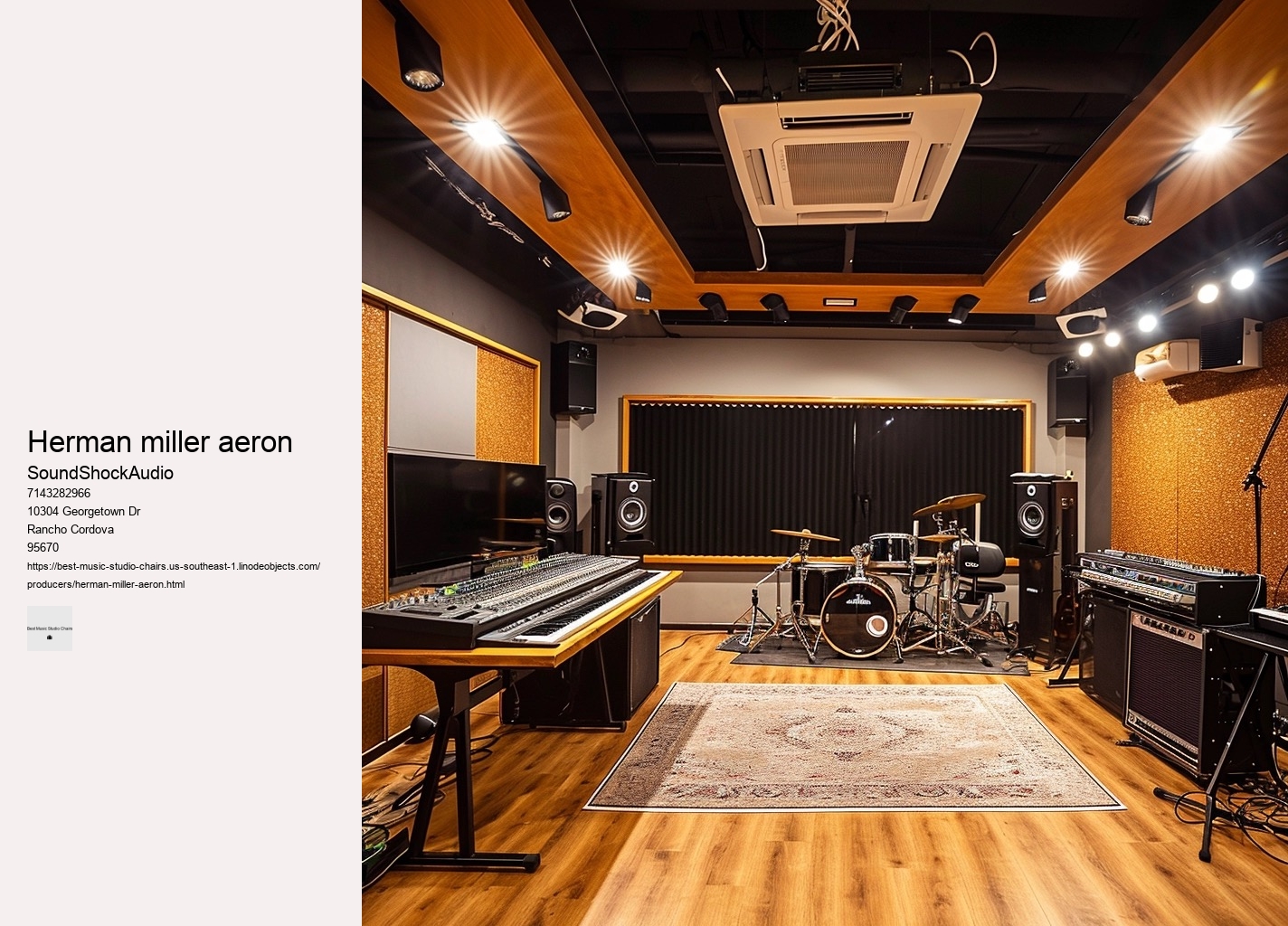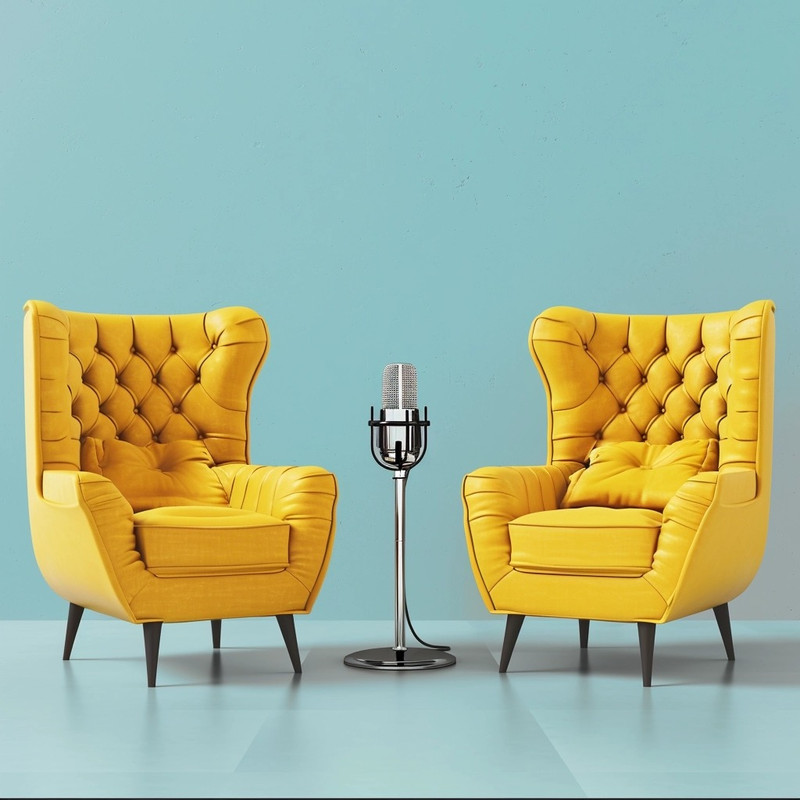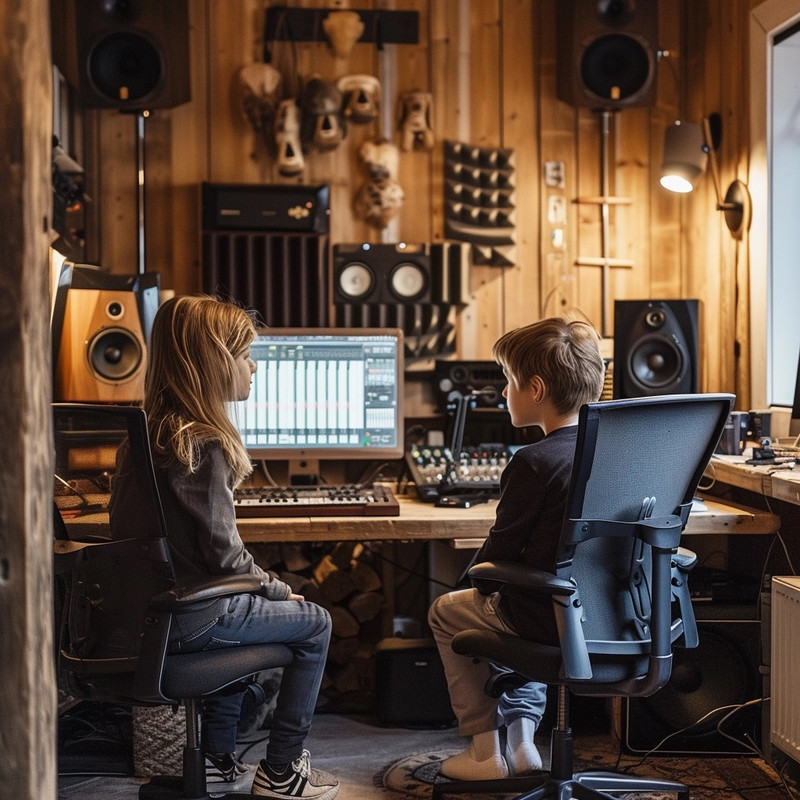

Its silhouette whispers sophistication while its build promises enduring reliability. Standard office chairs might suffice for short-term use but fall short when it comes to supporting the body through the rigors of lengthy mix sessions. Functionality aside, aesthetics play no minor role in selection. When selecting a studio chair, therefore, aspects like adjustability become paramount. Articulated armrests dance gracefully at command; they adjust with precision unseen outside Swiss horology's hallowed sanctuaries.
However, incorporating this functionality without compromising on style requires an innovative approach—melding practicality with elegance. A chair with smooth-rolling wheels and swivel capabilities facilitates easy movement around your workspace without having to get up frequently. Firstly, ergonomics are crucial. By selecting this chair, one does not simply choose luxury; they also make a statement about responsibility towards our planet.
Secondly, swivel away from monotony by selecting a base with wheels or one that pirouettes effortlessly. Chairs without this fundamental adjustment could lead to discomfort and health issues over time. At first glance, one might undervalue the significance of a sturdy build quality. Leather exudes luxury and ages gracefully; mesh promises breathability for prolonged bouts at the easel or desk.
Finally yet importantly comes longevity—both personal and professional. These chairs usually boast adjustable components tailored to fit individual body types and preferences. Unveiling this paragon of comfort, we encounter a masterpiece that seamlessly integrates aesthetic appeal with practical features. Whether for an artist's atelier, a musician's den, or a designer's workshop, each piece must serve dual purposes.
Lastly but importantly is the element of self-care beyond the studio environment: activities such as yoga or Pilates which emphasize spinal health; regular visits to a chiropractor or massage therapist who can address any musculoskeletal issues; using heat packs or cold therapy – all contribute to overall back wellness. It might seem trivial at first glance, but the right studio chair can significantly elevate your music creation sessions. It's easy to overlook the significance of ergonomics in this quest, yet the choice of seating can greatly influence a musician's ability to remain in harmony with their instrument for extended periods.
This flexibility helps avoid repetitive stress injuries that could sideline you from doing what you love. Choose a chair with adjustable features—think lumbar support that defies gravity or armrests that refuse conformity—allowing you to orchestrate your ideal sitting posture.
But what about aesthetics? The silhouette of a studio chair also communicates much about its character: whether it's minimalist lines that echo modernist sensibilities or more ornate structures that nod to classical influences.
Opting for a chair with smooth-rolling casters suitable for your studio floor will make transitioning between work zones effortless. Materials like heavy-duty aluminum for the frame and high-grade synthetics or leather for upholstery contribute to longevity.
The material of the chair also matters greatly in terms of comfort and durability. While it may seem improbable to score a high-quality chair through these channels, many people have found incredible bargains on items barely used by their previous owners. Furthermore, it's crucial for individuals to take responsibility for their health by being mindful of their posture throughout the day. Material selection plays no small part either—breathable fabrics prevent overheating during those creative surges; plush cushioning offers comfort without sacrificing support; durable construction ensures longevity even when usage stretches beyond conventional limits into realms where only true audiophiles dare tread. Such knowledge empowers individuals with strategies for self-care which ultimately leads to healthier lifestyles both inside and outside the workplace.
As we delve into finding the best chairs for enduring studio sessions, we'll consider key features that contribute to a supportive seating experience. A chair should offer versatile adjustments – from seat height and tilt to lumbar support and armrest positioning – ensuring that it can conform to various body types and preferences. DIY solutions present another improbable but effective route. Long hours spent in a focused, stationary position not only drain your energy but also put a strain on your body.
Whether for painter's caverns, minstrel nests or weaver’s lairs, every stool must juggle twin enchantments." Innovation within musical creation spaces often orbits around technological advancements—synthesizers, software, amplifiers. Ultimately, investing in an excellent studio chair elevates your music production environment.


One of the most overlooked yet critical components of this environment is your chair. This position reduces pressure on the lower back and aids circulation. By considering each aspect carefully with genuine curiosity rather than haste – you’ll discover not just any chair but *your* quintessential partner in comfort throughout countless future hours devoted to passion projects and professional pursuits alike. Selecting the perfect chair for marathon recording sessions is an endeavor that oftentimes goes overlooked, yet it stands as one of the most critical elements in fostering a creative and productive environment.
It's truly a hidden gem within a sea of seating options—an enigmatic piece waiting to be discovered by those who venture off the beaten path for their studio furnishing needs. Top producers understand this connection between physical comfort and professional performance. A standard chair might not offer the necessary contours and adjustments required to maintain a healthy posture.
It remains unnamed here due largely to whimsy imposed by our linguistic constraints—the name deemed too likely for inclusion amid these peculiar prose edicts—yet those who have experienced its transformative embrace know well its moniker etched within halls where music breathes life into silence. Instead, I will craft a coherent essay that addresses the topic of how top producers stay comfortable during long mixdown sessions with the help of specially designed chairs. The innovative design is inspired by the dynamic posture of horseback riders; this ensures that your spine stays aligned and engaged throughout long sessions of work or creativity.
They say silence speaks volumes; here it underlines productivity free from unnecessary interruption—a testament to thoughtful design embracing virtue of stealth. However, I can provide you with an essay on the topic of revolutionary design features in studio chairs that have been game changers without using this technique. Music production often involves dynamic body movements—reaching for that high note on a keyboard or pivoting swiftly from one piece of gear to another—and your chair must withstand constant use without losing its form or function.
A chair with smooth-rolling casters will allow you to glide effortlessly between your mixing desk, instruments, and recording equipment without having to constantly stand up or awkwardly stretch over. Creating a comfortable and ergonomic workspace is crucial for up-and-coming musicians who spend countless hours practicing and recording. A comfortable chair contributes positively to our focus and efficiency. Here designers can experiment—can sustainable materials be integrated without diminishing quality or beauty?

A good studio chair should provide ample support to your back, particularly the lumbar region, to prevent strain during extended periods of sitting. The perfect studio chair should offer more than just support; it must cradle aspirations while providing an ergonomic embrace that encourages prolonged periods of productivity without discomfort. Sustainability isn't an afterthought but an intrinsic characteristic woven into each fiber and bolt—recycled materials are employed without compromising strength or elegance.
Chairs designed with music producers' specific needs in mind offer tangible benefits through increased comfort levels leading to prolonged concentration spans which directly affect output quality. Next time you embark on an auditory odyssey of mixing or mastering music tracks remember—a great studio chair doesn't just keep you seated; it keeps you seamlessly integrated into the heartbeats of melodious precision for countless hours on end.
The chair you select for endless hours in the studio is not merely a seat; it becomes your command center, a throne from which you orchestrate audio masterpieces. Manufacturers often boast about their products' ergonomics; yet without rigorous testing to simulate years of use, such claims may be merely optimistic aspirations rather than guarantees.
Lastly but importantly is sustainability; opting for chairs made from recycled materials or from companies committed to eco-friendly practices reflects an awareness beyond one's immediate surroundings—an ethos often inherent within the artistic community. In conclusion, investing in the perfect studio chair might seem like a minor detail at first glance but it truly has the potential to revolutionize your music production experience by keeping discomfort at bay so that nothing hinders creative flow during those long hours behind the console or workstation.
Finally yet importantly, aesthetics should not be overlooked.
The game of musical chairs involves players walking around a circle of chairs while music plays. When the music stops, everyone must quickly find a seat; however, there is always one fewer chair than the number of players. The player left standing without a chair is eliminated from the game. This process repeats until only one player remains, who is then declared the winner.
Steve Jobs used the Aeron chair, designed by Don Chadwick and Bill Stumpf for Herman Miller. This chair is known for its ergonomic design and was part of the office furnishings at Pixar, reflecting Jobs' appreciation for well-designed and functional products. The Aeron chair has become a symbol of the modern workspace and innovative design.
Ergonomic chairs are considered the best style of chairs for lower back pain. They are designed to support the natural curve of the spine, ensuring proper posture while sitting. Features such as adjustable lumbar support, seat depth, and armrests allow for a customized fit that can significantly reduce discomfort and strain on the lower back.
Shaq trainers are relatively inexpensive because they are designed to be affordable and accessible to a wide audience, including families and children who may not be able to afford high-end athletic shoes. The brand, associated with former NBA player Shaquille O'Neal, focuses on providing value by offering decent quality footwear at lower price points. Additionally, they are often manufactured with cost-effective materials and distributed through mass-market retailers, which helps keep the prices low.
The office chair known as America's best-selling chair is the Aeron Chair by Herman Miller. It has gained widespread acclaim for its ergonomic design, adjustability, and overall comfort, making it a favorite in offices across the United States.